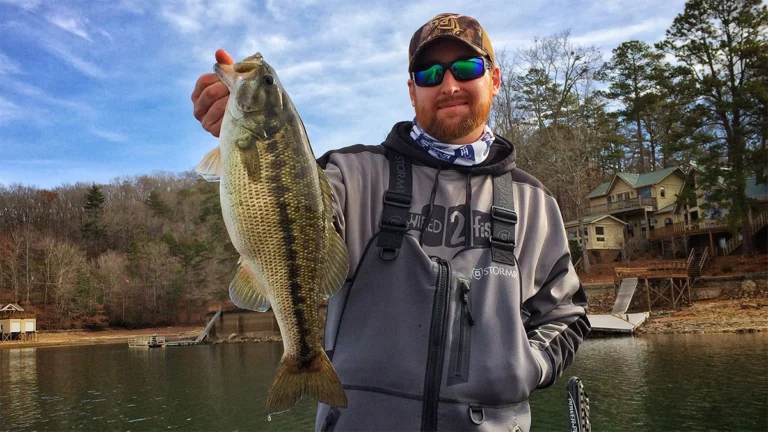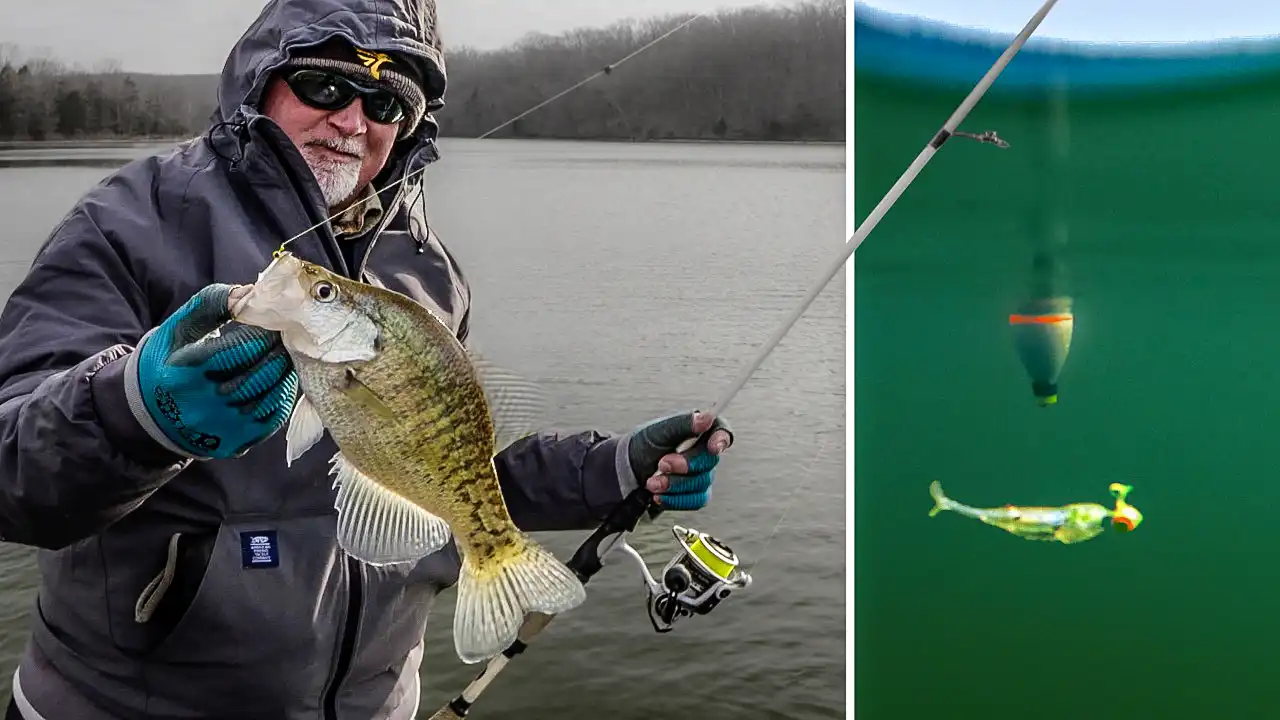Okay, so we’ve established how crappy the weather is right now so I’ll do my best to stop harping on that. But it’s also important to acknowledge because it’s not pleasant to idle around in your boat for hours right looking for stuff to fish. You’ll be a popsicle if you try that.
Instead of over preparing and overthinking the situation, I encourage you to make a concerted effort to keep things as simple as possible. Here enters the trusty and beloved channel-swing banks. They’re not as pretty as a springtime grass bed but they’re easy to see with your naked eyes and they hold a pile of fish right now. If you can think of a channel-swing bank on your favorite lake right now, I guarantee there are multiple big bass sitting on it as you’re reading this article.
For those who may not know what a channel-swing bank is, let’s spend a few sentences going over the rudimentary basics. All creek and river arms have a deep channel that’s primarily situated in the middle between the banks on each side. But over time, both natural current and wind current push an excess of water against the outside bends of these areas. This is why you’ll often see steep walls on the banks of skinny rivers and creeks; the water has been beating these areas for years and creating a steep bank.
I’m of the belief that the large majority of bass anglers prefer to fish shallow water—it’s simply more appealing to target visual cover and those shallow bites are often most aggressive. I’m the same way most of the year… except now. I’d sell my truck to get a bite some days and these unassuming channel-swing banks are the way to get a lot of consistent success.
So if you see a steep bank, stop and survey it. Due to erosion, you’ll often see fallen trees on these banks and you’ll be tempted to revert back to your shallow-water tendencies but try your best to withstand the urge. Instead, stay way off the bank and probe the fallen tree starting with the presumed treetop and slowly making your way towards the bank.
My reasoning for this comes after a lot of screw-ups fishing this kind of cover. I was always so tempted to fish anything visible. So if a big tree was in the water and only the first 12 feet of the trunk was visible, I’d troll right over to it and start plunking my jig all over the place. I’d catch some fish, but little did I realize that my dang boat was hovering over the rest of the laydown and spooking the rest of the fish. So when fishing a tree that might have held a dozen fish, I’d catch 2 and mess everything up due to the shallow-water commotion I was causing.
So when you run a cross a channel-swing bank, do your very best to start as far away from the bank as you can in order to maintain some semblance of stealth. Your first few casts may not hit any cover and that’s okay; inch closer to the bank and you’ll eventually feel a multitude of tree tops and other hard cover that has washed against the steep bank throughout the years.
It’s important to understand that bass congregate in these areas this time of year. These areas offer a dynamic environment that revolves heavily around the principle of verticality. Steep banks allow a bass to change their environment very quickly. With a few flicks of their tail they can go from 20 feet deep to snugged up against the trunk of a laydown in 2 feet or water within seconds. That’s very important this time of year because the weather can be absolutely stupid as we touched on earlier. One day it’ll be 60 degrees with tornadoes and the very next day it may be in the 20s with ice covering your line guides. The bass absolutely know this is a volatile time of year, so they love to hang around these steep banks that give them the ability to quickly adapt to this wild weather.



















